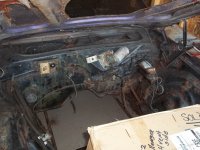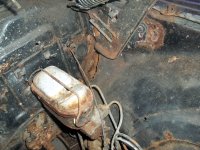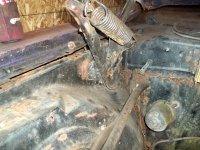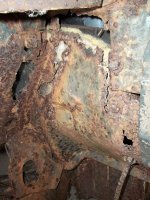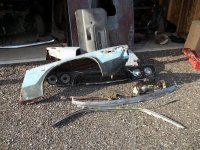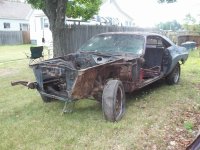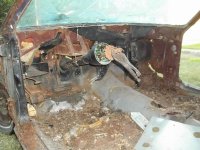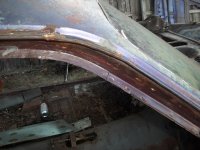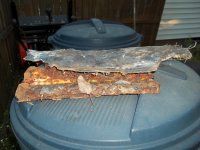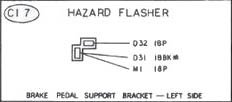Dr.Jass
Pastor of Muppets
Well, I've decided the time has come. Unfortunately, that means a Challenger is going to suffer The Fate.
After some careful evaluation of what's there, serious consideration, and conversations with a few friends, I've decided that Flying Jerry's old '74 Challenger has reached the end. While Kev and I agree that yes, it's an E-body and technically probably shouldn't be scrapped, it's just too far gone. Though I haven't bothered to document any of it, I've spent some quality time with it in several visits to the storage. Between rust and the roof, the damage is just too severe. There's literally nothing to which a guy could start welding new panels, and the tree took out both the side and roof structures. The worthwhile parts don't warrant paying storage on the entire car any longer.
The plan? Take anything worth taking, however trivial. This includes most of the interior plastics and trim, the seats, every piece of original hardware I can bag and tag, switchgear, some cluster parts, the taillamps, and any decent exterior trim. I can do that stuff where it sits. Once I've done much if not all of that, I'll borrow a trailer so I can bring it here and do what I did with my Imperial parts car several years ago: lift it and remove the disc brakes, swaybar (if it's even there--I honestly don't remember at the moment), complete rear axle, lower control arms, etc. I'll leave the hulk sitting on the trailer and have a scrapper friend haul it to the nearby yard. They'll lift it to its doom with The Claw.
The storage fees aren't a problem, mind you, and there's a bunch of other stuff (including five engines) in that spot that needs to stay. However, I believe my friend is close to finally giving me a hard number on his Dart. He hasn't given me a price but we seem to be nearing one, partially because of his desire to get it out of its borrowed storage spot. As soon as he spits out a figure, I'm at the bank. When I buy that car it needs to go somewhere. I've already got a spot; I just need that '74 gone.
After some careful evaluation of what's there, serious consideration, and conversations with a few friends, I've decided that Flying Jerry's old '74 Challenger has reached the end. While Kev and I agree that yes, it's an E-body and technically probably shouldn't be scrapped, it's just too far gone. Though I haven't bothered to document any of it, I've spent some quality time with it in several visits to the storage. Between rust and the roof, the damage is just too severe. There's literally nothing to which a guy could start welding new panels, and the tree took out both the side and roof structures. The worthwhile parts don't warrant paying storage on the entire car any longer.
The plan? Take anything worth taking, however trivial. This includes most of the interior plastics and trim, the seats, every piece of original hardware I can bag and tag, switchgear, some cluster parts, the taillamps, and any decent exterior trim. I can do that stuff where it sits. Once I've done much if not all of that, I'll borrow a trailer so I can bring it here and do what I did with my Imperial parts car several years ago: lift it and remove the disc brakes, swaybar (if it's even there--I honestly don't remember at the moment), complete rear axle, lower control arms, etc. I'll leave the hulk sitting on the trailer and have a scrapper friend haul it to the nearby yard. They'll lift it to its doom with The Claw.
The storage fees aren't a problem, mind you, and there's a bunch of other stuff (including five engines) in that spot that needs to stay. However, I believe my friend is close to finally giving me a hard number on his Dart. He hasn't given me a price but we seem to be nearing one, partially because of his desire to get it out of its borrowed storage spot. As soon as he spits out a figure, I'm at the bank. When I buy that car it needs to go somewhere. I've already got a spot; I just need that '74 gone.

